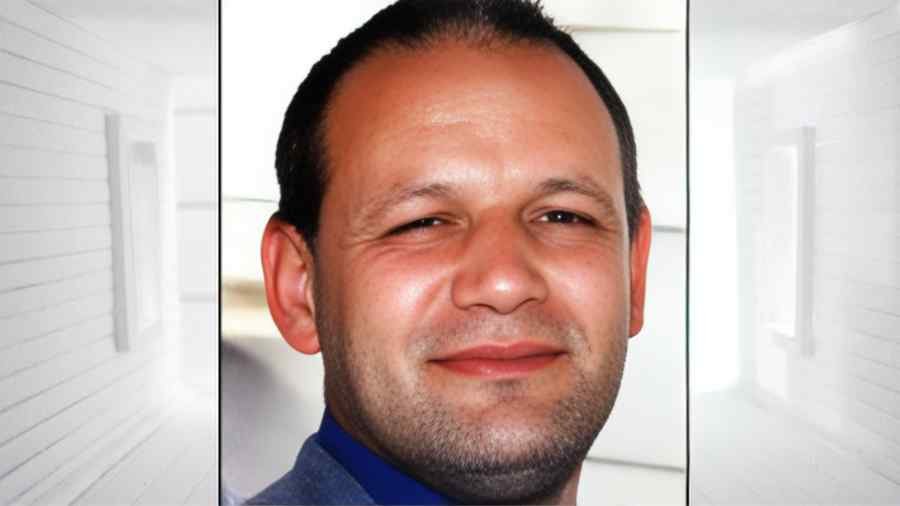Steven Hoskin: The Tragic Case That Changed Adult Safeguarding in the UK

The story of Steven Hoskin remains one of the most heartbreaking and transformative cases in modern British social care. His death in 2006 in St Austell, Cornwall, not only shocked the nation but also exposed serious gaps in the way vulnerable adults were supported and protected. Steven’s case became a catalyst for significant reforms in safeguarding policies across the United Kingdom. This article examines his life, the circumstances surrounding his death, the systemic failures that contributed to it, and the enduring lessons the UK continues to draw from his tragedy.
Who Was Steven Hoskin?
Steven Hoskin was a 38-year-old man living in Cornwall who had learning difficulties and was classified as a vulnerable adult. Despite these challenges, Steven was known as a kind, trusting, and gentle individual. He enjoyed simple pleasures, was eager to socialise, and longed for friendship and acceptance. Tragically, it was this very trust and desire for companionship that made him a target for manipulation and abuse by those he considered his friends.
Steven’s early life had been marked by instability. Like many adults with learning disabilities, he found it difficult to navigate everyday challenges, including managing relationships and money. He was living independently in supported accommodation, receiving occasional visits from social care professionals. However, over time, the supervision and attention he received diminished, and his vulnerabilities increased.
The Circumstances Leading to His Death
In 2006, Steven became entangled with a group of individuals who exploited his kindness and naivety. Among them was a young couple and several others who began visiting his flat frequently. They manipulated Steven into allowing them to stay, gradually taking over his home — a form of abuse later identified as “cuckooing,” where criminals or abusers invade the home of a vulnerable person for exploitation or control.
Over a period of weeks, Steven was subjected to physical, emotional, and psychological abuse. He was forced to perform degrading tasks, beaten, burned, and humiliated. Reports later revealed that he was made to wear a dog collar and lead and had been seen in public with visible injuries. Neighbours noticed strange behaviour and even reported concerns, but these were not followed up effectively by the authorities.
On the night of his death, Steven was forced to climb a railway viaduct ladder in the dark, barefoot and terrified. He fell thirty metres to his death. The investigation later revealed he had injuries consistent with torture, burns, bruises, and traces of alcohol and paracetamol in his system. The sheer brutality of what he endured deeply disturbed the public and professionals alike.
The Serious Case Review
Following his death, the Cornwall Adult Protection Committee commissioned a Serious Case Review to examine what went wrong and how such a tragedy could have been prevented. The review painted a devastating picture of systemic failure. Steven had come into contact with at least a dozen professionals from various agencies — including social services, housing, health, and the police — in the months leading up to his death. Yet, despite these interactions, no one took decisive action to protect him.
The review found that:
There had been numerous missed opportunities to intervene.
Communication between agencies was poor, with little sharing of information.
Professionals failed to recognise the seriousness of the risks Steven faced.
Safeguarding procedures were either misunderstood or not followed.
The lack of a coordinated, multi-agency response left Steven effectively unprotected.
The review also highlighted how the concept of “independence” for adults with learning disabilities had been misinterpreted. Professionals were often reluctant to intervene too much in the lives of vulnerable adults for fear of limiting their freedom. However, in Steven’s case, this hesitance to act allowed his abusers to take full control of his life.
The Wider Impact on UK Safeguarding
The death of Steven Hoskin became a turning point for adult safeguarding policy in the UK. It prompted a nationwide re-evaluation of how local authorities, police, and care agencies work together to protect vulnerable adults.
One of the key outcomes was the strengthening of multi-agency safeguarding partnerships. Authorities were urged to break down silos and ensure that professionals shared information more effectively. The case also influenced the eventual introduction of the Care Act 2014, which placed adult safeguarding on a statutory footing for the first time. This meant that local authorities now had a clear legal duty to protect adults at risk of abuse or neglect.
Furthermore, Steven’s case encouraged professionals to view safeguarding as everyone’s responsibility, not just that of social services. Health workers, landlords, police officers, and even members of the public were urged to recognise signs of abuse and to act upon them.
The Role of Professional Judgment
One of the most powerful lessons from the Steven Hoskin case is the importance of professional curiosity and judgment. Many professionals had seen small signs of concern — bruises, strange visitors, or sudden behavioural changes — but they either dismissed these as minor issues or assumed someone else was dealing with them.
This lack of professional curiosity remains a recurring theme in many safeguarding reviews. It underscores the need for practitioners to ask difficult questions, challenge assumptions, and follow up on concerns. Steven’s death demonstrated that ticking boxes or following rigid procedures is not enough; protecting vulnerable people requires empathy, vigilance, and decisive action.
Life After the Case: Changes in Practice
Since the tragedy, there have been notable improvements in adult safeguarding across the UK. Local Safeguarding Adults Boards (SABs) have been established to coordinate efforts among different agencies. Training programmes now emphasise the recognition of coercive control, financial abuse, and modern slavery — issues that were often overlooked in the past.
Professionals are now encouraged to adopt a more person-centred approach, focusing on building trust with vulnerable adults and understanding the full context of their lives. Technology has also improved information sharing, with digital systems allowing agencies to flag concerns and track interventions more efficiently.
Nevertheless, challenges remain. Resource constraints, heavy caseloads, and bureaucratic pressures can still make it difficult for professionals to maintain the vigilance required. Some recent safeguarding reviews suggest that lessons from Steven’s case are still being relearned in certain areas.
The Human Cost of System Failure
At the heart of this story lies a deeply human tragedy. Steven Hoskin was not a case file or statistic; he was a person with feelings, hopes, and dreams. His vulnerability was exploited, his cries for help were ignored, and the systems designed to protect him failed catastrophically.
His death serves as a painful reminder that safeguarding is not merely an administrative process but a moral responsibility. Every professional who encounters a vulnerable person has a duty to act — not out of fear of blame, but out of compassion and respect for human dignity.
Ten Years On: Remembering Steven Hoskin
A decade after Steven’s death, social care professionals reflected on how far the sector had come. Many improvements had been made, but as new safeguarding challenges emerge — from online exploitation to modern slavery — the fundamental lesson remains unchanged: vulnerability must never be ignored.
Commemorations of Steven’s life have often stressed the importance of empathy and human connection in safeguarding work. When professionals see individuals as people first — not just as clients, tenants, or service users — they are far more likely to intervene effectively.
Lessons for the Future
The Steven Hoskin case continues to be used in training for social workers, healthcare professionals, and law enforcement officers. It highlights the need for:
Early recognition of abuse or neglect.
Active information sharing between agencies.
Empowering professionals to make timely decisions.
Avoiding excessive bureaucracy that delays action.
Ensuring that vulnerable adults are truly listened to.
Steven’s death also reminds society of the importance of community awareness. Neighbours, friends, and even bystanders often hold vital information that can prevent harm if reported promptly. Safeguarding is not just a professional duty — it is a collective one.
Conclusion
The case of Steven Hoskin is one of the most powerful reminders in British social care history of what can happen when systems fail to protect the vulnerable. His life and death exposed weaknesses that spurred lasting reform, reshaping the UK’s approach to adult safeguarding.
Yet, beyond the policy changes and reviews, Steven’s story is ultimately about humanity — the need to care, to notice, and to act. His legacy endures not just in the laws and procedures that followed, but in the daily work of those who continue to protect vulnerable adults across the country.



